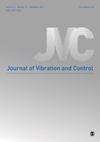火焰传递函数的识别和边界阻抗特性对热声不稳定性影响的机理分析
IF 2.4
3区 工程技术
Q2 ACOUSTICS
引用次数: 0
摘要
热声不稳定性是现代燃气轮机运行中的一个常见问题。预测热声不稳定性并阐明其机理是燃气轮机行业的研究重点和难点。作为火焰对声学扰动的响应函数,火焰传递函数是研究热声不稳定性的关键参数。本文基于比例自适应模拟(SAS)模型结合涡耗散概念(EDC)燃烧模型,采用系统辨识方法对时域流场数据进行处理,火焰传递函数提取结果与实验值吻合良好。然后,给出了低阶热声网络模型(LOTAN)的详细推导过程,以捕捉热声系统中声波的行为特征。在此基础上,分析了声边界条件和滞后时间对燃烧系统热声不稳定性的影响,并探讨了模态振型、压力、振动速度相位与热声不稳定性之间的关系。研究发现,压力与振动模式之间的相位关系可用于确定系统的热声不稳定性。这对于确定系统的热声不稳定性、阐明其产生的内部机理具有重要的现实意义,并为后续的热声不稳定性控制提供了理论支持。本文章由计算机程序翻译,如有差异,请以英文原文为准。
Identification of flame transfer function and mechanism analysis of the influence of boundary impedance characteristics on thermoacoustic instability
Thermoacoustic instability is a common problem in the operation of modern gas turbines. The prediction of thermoacoustic instability and the clarification of its mechanism are the research focus and difficulty in the gas turbine industry. As a response function of flame to acoustic disturbance, flame transfer function is a key parameter in the study of thermoacoustic instability. In this paper, based on the scaled adaptive simulation (SAS) model combined with the eddy dissipation concept (EDC) combustion model, the time-domain flow field data are processed by the system identification method, and the results of flame transfer function extraction are in good agreement with the experimental values. Then, the detailed derivation process of the low-order thermoacoustic network model (LOTAN) is given to capture the behavior characteristics of the acoustic wave in the thermoacoustic system. On this basis, the effects of acoustic boundary conditions and hysteresis time on the thermoacoustic instability of the combustion system are analyzed, and the relationship between the mode shape, pressure, vibration velocity phase, and thermoacoustic instability is explored. It is found that the phase relationship between pressure and vibration mode can be used to determine the thermoacoustic instability of the system. This is of great practical significance for determining the thermoacoustic instability of the system and clarifying the internal mechanism of its generation and provides theoretical support for the subsequent thermoacoustic instability control.
求助全文
通过发布文献求助,成功后即可免费获取论文全文。
去求助
来源期刊

Journal of Vibration and Control
工程技术-工程:机械
CiteScore
5.20
自引率
17.90%
发文量
336
审稿时长
6 months
期刊介绍:
The Journal of Vibration and Control is a peer-reviewed journal of analytical, computational and experimental studies of vibration phenomena and their control. The scope encompasses all linear and nonlinear vibration phenomena and covers topics such as: vibration and control of structures and machinery, signal analysis, aeroelasticity, neural networks, structural control and acoustics, noise and noise control, waves in solids and fluids and shock waves.
 求助内容:
求助内容: 应助结果提醒方式:
应助结果提醒方式:


